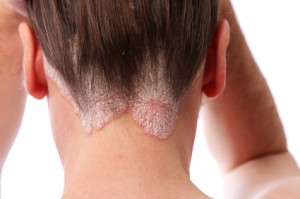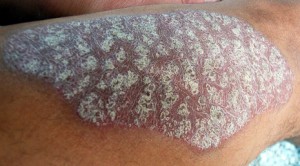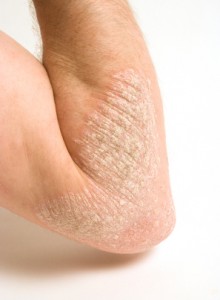Acupuncture treats Psoriasis
The first time I saw a psoriasis patient in the clinic I was shocked to see just how much of her body had psoriatic plaques on it. She felt disfigured by psoriasis, and our treatment was as much to treat her skin condition as it was to heal her spirit. Psoriasis is not contagious, but so many patients tell me people recoil and act like they might “catch psoriasis” if they touch any scales or plaques.
Skin conditions affect a person’s quality of life. My teacher told me a story about one of his patients who committed suicide because she felt so horribly disfigured. This is why I decided to concentrate on dermatology. Acupuncture treats psoriasis. No one should have to suffer with skin problems like psoriasis.
Patients using acupuncture and herbal medicine together with dietary and lifestyle modifications will see significant changes to their psoriasis symptoms in 3 to 9 months. Most patients begin to see changes in psoriasis symptoms within 3 months of starting intensive treatments. If acupuncture is used without herbal medicine, symptoms may take significantly longer to resolve, and in some cases of very stubborn psoriasis there may only be a partial change in psoriasis symptoms. For a tough skin problem like psoriasis, a multi-part treatment plan is the only way to get lasting results and reduction in psoriasis symptoms.
What causes psoriasis?
Psoriasis is a very common skin condition. Anyone can develop psoriasis, but the onset is mostly seen in 15 to 35 year olds. As I mentioned, psoriasis is not contagious. Psoriasis is commonly passed down through families, so if your parents or grandparents had psoriasis, you might develop it too.
Scientists don’t know the exact cause of psoriasis. What they think is going on is the body’s immune system starts to attack skin cells instead of invaders. The type of immune cell that is active is called a T-lymphocyte. The presence of these cells causes other immune responses, which leads to a more rapid than normal turnover of healthy skin cells. Rather than skin cells changing over in weeks, they change over in days. This is what creates psoriasis plaques and scales. The skin cells become heaped up, the surrounding skin becomes red or even purple and there can be pin-prick bleeding when the scales are scraped off (Auspitz sign).
Scientists have identified some triggers for the development of psoriasis, in addition to the genetic pre-disposition. The triggers for a psoriasis attack are:
- Bacteria or viral infections, like strep throat
- Dry skin
- Skin damage, including cuts, burns, and insect bites
- Some medications, like antimalaria drugs, beta-blockers, and lithium
- Stress
- Too much or too little sunlight
- Over-consumption of alcohol
People who have a weakened immune system may develop more severe cases of psoriasis. Psoriasis may accompany arthritis, and is known as psoriatic arthritis. In psoriatic arthritis, there are changes to the joints, as in rheumatoid arthritis, and causes changes in the finger and toe nails. Psoriatic arthritis can affects the spine (spondylitis), the cartilage and tendons.
What are the different kinds of psoriasis? Where does it show up?
Psoriasis mostly occurs on the outside of the elbows and knees, the trunk, and also the scalp, but psoriasis can affect any part of the body. Plaque psoriasis is most common. Plaque psoriasis lesions are red with silvery scales. Guttate psoriasis (guttate is Latin for drop) shows up as small, pink or red bumps on the skin with a very slight scale. The two least common types of psoriasis are pustular psoriasis and erythrodermic psoriasis. Pustular psoriasis occurs with clearly defined, raised bumps on the skin filled with pus. The surrounding skin will be pink, red or even purple. Erythrodermic psoriasis can be very serious, sometimes requiring hospitalization. In this condition, a very large area of the body, perhaps even the entire body, turns bright red and inflamed. The lesions appear as a rash that may also be peeling. The redness is due to an increased blood flow to the skin, which can put a strain on the heart.
Scalp psoriasis, while not entirely its own condition, deserves its own attention. Scalp psoriasis is characterized by raised, red or even purple, scaly patches. There can be one patch of scalp psoriasis or many covering the whole scalp. Scalp psoriasis can affect the forehead, the back of the neck and behind the ears.
How does acupuncture treat psoriasis?
Acupuncture and Chinese herbal medicine together are a powerful pair. I use these two modalities to help restore the balance of the body. When imbalances arise, so does disease. So by bringing the body’s systems back into harmony, disease can be resolved. In addition to acupuncture and Chinese herbal medicine, I use dietary therapy and lifestyle modifications to help reduce psoriasis symptoms. Regular treatment for 3 to 9 months will reduce the number and size of plaques, scales, redness, and other psoriasis symptoms. But you have to commit to treatment. If treatment is stopped before symptoms of have resolved, there will be a recurrence.
It is important to consolidate the treatment after the clearing treatment to ensure there will not be a recurrence. This consolidating treatment allows me to nourish the new skin back to health by restoring the normal blood flow and moisture. Some people choose to come in for seasonal tune-ups, too, but this isn’t necessary. My goal is to treat your psoriasis so you can get on with your life instead of having to come for treatments and take medicine for the rest of your life.
My additional training in dermatology allows me to customize each treatment to you, the patient, and make sure you get the results you want.
To make an appointment with for treatment, please go to the Appointments page. If you have further questions, feel free to ask through the Contact page.



